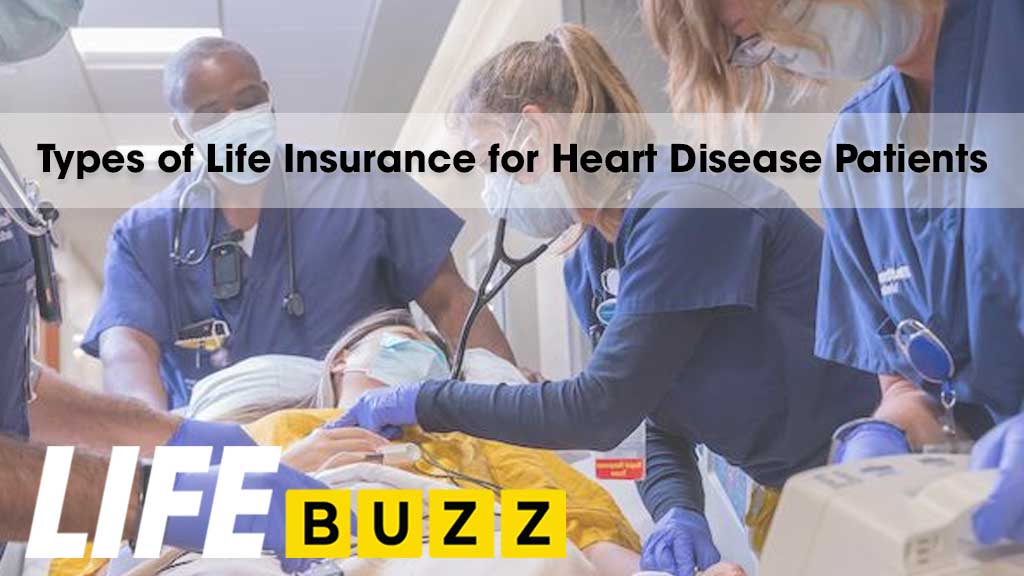Heart disease remains the 2nd leading cause of death in Canada, with over 90,000 fatalities per year, according to the Heart & Stroke Foundation’s 2022 Report. For the 2.4 million Canadians living with heart conditions, obtaining affordable life insurance coverage can be challenging yet crucial for protecting loved ones.
This comprehensive guide examines heart disease prevalence in Canada, dives deep into navigating policies with different conditions, provides expert tips for securing life insurance for heart disease, outlines estimated costs, and more. Whether you are a patient researching options or an insurance advisor helping high-risk clients, this definitive resource explores how major cardiovascular diseases impact eligibility and premiums, along with strategies for achieving coverage.
How Prevalent is Heart Disease in Canada?
While great medical advances have been made, heart disease continues to affect a large segment of the Canadian population. Some key national statistics paint a picture of the issue’s breadth:
- 1 in 12 Canadians have a diagnosed heart condition – approximately 2.4 million people.
- Heart disease claims one life every 5 minutes in Canada.
- Hospitalizations for heart failure have risen 25% over the past ten years.
- Congenital heart defect rates are now 1 in 100 births.
- Healthcare costs of heart disease are in the top $20 billion per year.
With so much of the population dealing with cardiovascular conditions, understanding how to secure life insurance for heart disease is essential.
Distribution of Heart Disease Deaths in Canada
Of the 90,000 annual fatalities from heart disease, the distribution across some top categories is:
- Ischemic heart disease – 63%
- Heart failure – 11%
- Hypertensive diseases – 6%
- Cardiomyopathy – 6%
- Atrial fibrillation – 5%
- Stroke – 5%
- Aortic aneurysms – 3%
Ischemic causes such as coronary artery disease make up a clear majority of deaths. Insights into specific conditions are provided in the following sections.
Gender Differences in Heart Disease Risk
While heart disease is often seen as mainly impacting men, statistics reveal women face risks as well:
- Men have a 1 in 5 lifetime risk of developing heart disease.
- Women have a 1 in 6 lifetime risk of developing heart disease.
- Women above age 55 have double the risk compared to pre-menopause.
- Heart disease causes 1 in 3 deaths in Canadian women.
Understanding these gender differences can help advisors guide clients to appropriate solutions to life insurance for heart disease. Next, we will explore how major cardiovascular conditions impact policy eligibility and cost.
What Are The Most Common Heart Conditions That Affect Life Insurance in Canada?

When applying for life insurance in Canada , clients are asked to disclose any history of heart conditions, procedures, or family history of cardiovascular disease. Here, we outline some of the most prevalent diagnoses in Canada and typical underwriting outcomes that result.
Coronary Artery Disease
Coronary artery disease (CAD) is the buildup of plaque in the heart’s arteries, causing narrowing that can limit oxygen-rich blood flow. It may manifest as chest pain or shortness of breath with activity. Key statistics:
- Affects 500,000 Canadians.
- Leading cause of heart attacks.
- Requires angiogram or stress testing for diagnosis.
For life insurance, severity and progression of CAD influences eligibility and cost:
- Mild, stable CAD may have little rating impact.
- Advanced multi-vessel disease likely rated +50% to +100% or declined.
- Major cardiac events in the past 6-12 months are high-risk.
Advisors can help clients get the best offers by presenting optimized medical records, emphasizing stability, and applying to appropriate insurers.
Prior Heart Attack
Heart attacks, also called myocardial infarction, are a common result of severe CAD. Some key metrics:
- 70,000 heart attacks per year in Canada.
- One every 7 minutes.
- 10% are fatal upon occurrence.
- The majority occur in those over age 65.
Insurance eligibility after a heart attack depends heavily on timing and current status:
- +50% to +100% rating if attacked within one year.
- As low as +25% rating if 1-3 years ago with normal recovery.
- Potentially standard rates if 4+ years ago with optimal health.
Proper post-event care and risk factor control are key advising points.
Stroke
A stroke occurs when the blood supply to the brain is interrupted, causing cell damage. Stats show:
- 50,000 strokes per year in Canada.
- The third leading cause of death.
- Risk increases with age, diabetes, and hypertension.
Life insurance guidelines for stroke history include:
- Decline if within the past year.
- Up to +50% rating if 1-2 years ago, depending on recovery.
- It is as low as a +25% rating with full recovery beyond two years.
Supporting documentation of successful rehabilitation is crucial when applying.
Arrhythmias
Abnormal heart rhythms, called arrhythmias, prevent proper blood flow. Common types are:
- Atrial fibrillation – irregular and rapid rhythm. Up to 350,000 cases.
- Ventricular tachycardia – dangerous rapid beat from ventricles.
- Bradycardia – slow heart rate below 60 bpm.
Insurance underwriting treatment depends on the severity:
- Low-risk rhythms may qualify for standard rates.
- Atrial fibrillation often +25% to +50% rating.
- Sustained ventricular arrhythmias may be declined.
Type, frequency, symptoms, and proper cardiac management are assessed.
Heart Valve Abnormalities
Valvular heart disease affects the leaflet flaps that regulate blood flow through the heart. Statistics indicate:
- Mitral valve issues are most common – up to 5% of Canadians.
- Aortic valve stenosis is the second most prevalent.
- Tricuspid valve disorders are rare.
Life policy eligibility with valve disorders depends on severity:
- Mild cases may get standard rates.
- Moderate disease +25% to +50% rating.
- Severe cases requiring surgery rated +100% or declined.
Highlighting stability and submitting echo reports aids underwriting.
Cardiomyopathy
Cardiomyopathy involves enlargement or stiffening of the heart muscle, making it harder to pump blood. It can be:
- Dilated – enlarged, thin ventricles.
- Hypertrophic – thickened heart muscle.
- Restrictive – stiffened ventricles.
Eligibility for those with cardiomyopathy varies by severity:
- Mild cases may get preferred rates.
- Moderate +50% rating or higher.
- Severe hypertrophic forms often declined.
Prognosis is key, with proper treatment and stable status giving better odds.
Congenital Heart Defects
Congenital defects, such as holes between chambers, affect up to 1% of Canadians:
- Simple defects may close on their own.
- Complex defects require surgery.
- Lifelong specialized cardiac care is often needed.
Life insurance underwriting for defects depends on severity:
- Small atrial septal defects may get preferred rates.
- Repaired tetralogy of Fallot qualifies around +50%.
- Complex conditions may be declined.
Highlighting successful corrective treatment is beneficial during application.
This overview of common heart conditions provides insights into potential impacts on life insurance eligibility and premiums. However, individual case results also depend on age, additional medical factors, and proper management. Working with an experienced advisor is key to obtaining accurate quotes. Next, we explore specialized policy options to accommodate high-risk cardiovascular patients.
Types of Life Insurance for Heart Disease Patients in Canada

Beyond regularly underwritten policies from major life insurers in Canada, those with heart disease can also consider specialized products designed for higher-risk applicants.
Simplified Issue Life Insurance for Heart Disease Patients
With simplified issue life insurance, the application process only involves answering a short list of medical questions and does not require a paramedical exam or fluids testing.
Pros
- Pre-existing conditions usually only affect premiums, not eligibility.
- Fast application process without lengthy underwriting.
- Coverage amounts up to $500,000 available.
Cons
- Maximum coverage is limited compared to fully underwritten policies.
- Premiums will be higher than traditional policies.
- Not available for some serious health conditions.
Simplified issue policies provide an excellent option for many heart patients to gain affordable coverage without struggles of traditional underwriting.
Guaranteed Issue Life Insurance for Heart Disease Patients
Guaranteed issue life insurance does not require any medical questions or exams during application, and acceptance is guaranteed.
Pros
- Guaranteed approval regardless of health history.
- No paramedical exam requirement simplifies the process.
- Very quick and easy application procedure.
Cons
- Coverage amounts to just $25,000 to $50,000 in most cases.
- Premium costs are extremely expensive.
- 2-year waiting period before full benefits common.
While maximums are low, guaranteed issue policies allow those with advanced heart disease to obtain at least basic coverage.
Graded Death Benefit Life Insurance for Heart Disease Patients
With graded benefit policies, death benefits are graded – meaning they increase over the policy duration. A sample schedule may be:
- Year 1: 30% of the face amount paid
- Year 2: 60% of the face amount paid
- Year 3+: 100% of the face amount paid
Pros
- Guaranteed issue underwriting.
- Maximum coverage up to $100,000 available.
Cons
- Limited payout if death occurs in early years.
- Premiums remain level even as benefits increase.
Graded policies can provide higher coverage for seriously ill applicants without the full 2-year wait of guaranteed issue products.
Employer or Alumni Life Insurance for Heart Disease Patients
Checking for insurance options through current or former employers or alumni institutions can be worthwhile, as they may offer simplified underwriting up to guaranteed issue.
Pros
- Group rates can lower premium costs.
- May have limited health questions.
- Coverage often up to $500,000.
Cons
- Requires relevant group affiliation.
- Pre-existing condition limits may apply.
- Benefits end if leaving the group.
Group life insurance plans warrant consideration for their potential underwriting leniency.
With numerous alternatives beyond traditionally underwritten coverage, advisors can guide heart patients towards securing valuable protection at affordable rates. Next, we look at estimated pricing.
Cost Estimates for Life Insurance for Heart Disease
While individual medical history, age, gender, and other factors determine actual pricing, we can provide general estimates for how different cardiovascular conditions may impact monthly premiums at various benefit levels:
Coronary Artery Disease
| $100,000 Coverage | $250,000 Coverage | $500,000 Coverage |
|---|---|---|
| Standard Rate: $30 | Standard Rate: $50 | Standard Rate: $75 |
| +50% Rating: $45 | +50% Rating: $75 | +50% Rating: $112 |
| +100% Rating: $60 | +100% Rating: $100 | +100% Rating: $150 |
Prior Minor Heart Attack (3+ Years Ago)
| $100,000 Coverage | $250,000 Coverage | $500,000 Coverage |
|---|---|---|
| +25% Rating: $52 | +25% Rating: $87 | +25% Rating: $131 |
| +50% Rating: $66 | +50% Rating: $110 | +50% Rating: $165 |
| +75% Rating: $79 | +75% Rating: $132 | +75% Rating: $198 |
Atrial Fibrillation (Well-Managed)
| $100,000 Coverage | $250,000 Coverage | $500,000 Coverage |
|---|---|---|
| +25% Rating: $52 | +25% Rating: $87 | +25% Rating: $131 |
| +50% Rating: $66 | +50% Rating: $110 | +50% Rating: $165 |
| +75% Rating: $79 | +75% Rating: $132 | +75% Rating: $198 |
These examples illustrate the potential impact on pricing across standard, preferred, and rated categories. They emphasize the importance of optimized patient care and risk factor management in controlling costs.
Expert Strategies for Finding Affordable Life Insurance for Heart Disease

Though shopping for life insurance for heart disease can be challenging, advisors have several strategies to secure competitively priced coverage for clients:
- Have clients compare quotes from a minimum of 5 insurers to identify the best rates for their situation. Run fully underwritten, simplified issue, and guaranteed issue quotes.
- Work with an independent life insurance brokerage that has specialized experience with impaired risk cases. Avoid captive agent channels.
- Ask clients if they have potential access to any employer or alumni life insurance policies which may offer simplified underwriting.
- Evaluate if any group life insurance options are available through professional associations or fraternal organizations to which the client belongs. Group plans can provide easier qualifications.
- Counsel clients on the importance of diligently controlling other health risk factors through medication adherence, diet, exercise, and lifestyle changes. Better risk profiles allow better offers.
- If coverage is declined initially, have clients re-apply once 12+ months have passed with continued optimal health management. Improved status may qualify them.
With preparation and persistence, many heart patients can obtain at least some level of affordable life insurance tailored to their budget and needs through these advisor tips.
How to Buy Life Insurance for Heart Disease in Canada
The application process for those with cardiovascular conditions requires careful navigation. Key steps include:
- Disclose all medical history and details fully and accurately on the application. Omissions or errors could invalidate a claim.
- Be prepared to provide medical records, echocardiogram reports, and physician statements to support the application. These strengthen the case.
- Work with an experienced broker to run quotes across multiple insurers for all policy types – traditional, simplified issue, and guaranteed issue.
- Take time to understand any exclusions, limitations, or waiting periods applied to a policy, and ensure you agree to all terms.
- Ask questions and clarify any aspect of the process you are unsure about. Reaching out to advisors for guidance is recommended.
With proper diligence taken during application, heart patients can secure appropriate coverage.
Where to Buy Life Insurance for Heart Disease in Canada
Heart patients have various options on where to apply for coverage:
- Independent Insurance Brokers – Allow access to the full market of insurers and specialized impaired risk expertise. Highly recommended channel.
- Direct Purchase – Applying online directly through insurer websites. Limited to regular underwriting products.
- Employers & Alumni – Group coverage options worth exploring for potential underwriting leniency.
- Associations & Organizations – Some professional bodies offer group life insurance plans.
- Online Marketplaces – Allow fast quote comparisons but still need underwriting.
Working with an expert broker typically provides the best chance for difficult-to-insure heart patients to secure tailored coverage.
Besides Heart Disease, several other common illnesses can have impact on your life insurance eligibility and premiums. Refer to these articles for more information on how to obtain life insurance with pre-exisiting conditions :
- Life Insurance with Autism Spectrum Disorder
- Life Insurance with Cancer
- Life Insurance with Alzheimer’s or Dementia in Canada
Case Study: Finding Coverage After a Heart Attack
To illustrate the search for high-risk life insurance, let’s examine a sample client scenario:
Client Profile
- Male, Age 52
- Suffered a major heart attack 18 months ago
- Had stent placement, recovered well
- Medications controlled, regular cardiac check-ups
- Ideal weight, non-smoker
Recommendations
- Apply for simplified issue policy with the highly lenient carrier – qualified for $250,000 at +50% rating.
- Also, submit for traditional coverage given stable status – offered $500,000 at +75% rating from one insurer.
- The client chose the simplified issue option due to the lower premium.
- Advise the client to re-apply within 12 months, as the rating may improve further.
This scenario shows that even after major cardiac events, coverage can be secured with expert guidance on product selection and marketplace knowledge.
Conclusion: Supporting Heart Patients With Life Insurance for Heart Disease
While heart disease remains highly prevalent in Canada, viable life insurance options exist for most patients through understanding underwriting approaches for different conditions, selecting appropriate specialized policies, and implementing expert advisor strategies. To explore personalized life insurance solutions for your heart condition, click below to connect with a LifeBuzz advisor who specializes in high-risk cases.
At Life Buzz, we’re committed to supporting Canadians with cardiovascular conditions by providing coverage education, marketplace insights, and access to experienced advisors who can guide high-risk clients toward protecting their families with affordable life insurance. Supporting the heart health community remains crucial.
For individual guidance on your specific situation, contact our advisors today to evaluate your options. Collaboratively, we can build an optimal plan that meets both your health needs and financial protection requirements. Canada has options to support your heart and your family — let us help you find them.
Frequently Asked Questions on Life Insurance for Heart Disease in Canada
Why is it difficult to get life insurance for heart disease in Canada?
Heart disease is a leading cause of death in Canada, so insurers view applicants with cardiovascular conditions as higher risk. Individual assessment of medical history and stability is required to determine eligibility and pricing.
When should someone with heart disease apply for life insurance for heart disease in Canada?
It's best to apply for life insurance as soon as possible after diagnosis before the condition progresses. Many options exist to cover those with mild to moderate heart disease.
How does a heart murmur affect eligibility for life insurance for heart disease in Canada?
Minor heart murmurs may have little impact on life insurance. Severe valvular murmurs can lead to a rating or decline. Proper diagnosis and submitting medical records help.
Can I get life insurance for heart disease after bypass surgery in Canada?
Yes, life insurance is possible after heart bypass surgery. Timing since surgery and current heart health determine availability and cost. Simplified issue policies are common options.
Is life insurance for heart disease available after a stent placement in Canada?
Life insurance is attainable after stent placements for artery blockages. Timing since the procedure and control of further heart disease progression are key factors.
How does atrial fibrillation affect eligibility for life insurance for heart disease in Canada?
Managed atrial fibrillation may result in rated premiums around +25% to +50%. Uncontrolled cases could be declined. Showing stability improves chances.
Can I get life insurance for heart disease with congestive heart failure in Canada?
You can get life insurance with congestive heart failure, but severity determines eligibility. Mild cases may get standard rates, while advanced illnesses can be declinable.
Does life insurance for heart disease cover angioplasty procedures in Canada?
Yes, life insurance will cover death after angioplasty. Timing since the procedure and current heart health impact policy availability and cost.
What is the best life insurance company for heart disease patients in Canada?
For heart patients, no one company is necessarily better. Working with an expert broker to access multiple specialized insurers offers the best results.
Can I get life insurance for heart disease with congenital heart defects like tetralogy of fallot in Canada?
Yes, you can get life insurance with corrected congenital heart defects. The severity of the defect and proper medical management determine eligibility and rates.
Will my life insurance for heart disease cover future heart attacks or disease progression in Canada?
A life insurance policy covers death from any cause, including future heart attacks or disease progression after the policy starts. No new underwriting is needed.
How long to wait to reapply for life insurance for heart disease after a heart attack in Canada?
It's recommended to wait at least 12 months after a heart attack before reapplying for life insurance. This allows for medical stabilization and improves chances for coverage.
Can life insurance for heart disease be denied for unreported heart conditions in Canada?
Yes, failing to disclose known pre-existing heart conditions could result in denial of a claim on material misrepresentation grounds. Always disclose full history.
Where can I get life insurance for heart disease with cardiomyopathy in Canada?
All major insurers offer coverage for cardiomyopathy. Work with an experienced high-risk broker to secure the best rates. Simplified issue policies are common.
What information do I need to apply for life insurance for heart disease in Canada?
When applying, be prepared to provide medical records, doctor statements, test results, and details on your diagnosis, treatment plan, and prognosis. Full data aids approvals.
Should I tell my life insurance for heart disease company about new heart symptoms or diagnoses in Canada?
Yes, contact your insurer about any major change in your heart health, like new diagnoses, symptoms or hospitalizations. This ensures proper policy management.
How much extra does life insurance for heart disease cost in Canada?
Actual premium increases depend on specific condition. But commonly expect 50-100% ratings above standard rates, especially within 5 years of diagnosis or events.
When does a heart condition make you ineligible for life insurance for heart disease in Canada?
Advanced congestive heart failure, recurring heart attacks, arrhythmias and other end-stage conditions could result in declination. But specialized policies can still help.
Should I work with an insurance broker for life insurance for heart disease in Canada?
Yes, brokers provide specialized guidance and access to high-risk carriers. Captive agents may not have options to cover complex cardiovascular conditions.
What activities help improve the chances of getting life insurance for heart disease in Canada?
Staying active, maintaining a healthy weight, quitting smoking, controlling cholesterol, taking medications, and following doctor's advice help secure affordable rates.
Article Sources:
To fully appreciate our rigorous adherence to veracity, transparency, and editorial independence, consider reviewing our Editorial Policy at Lifebuzz.ca. It is this dedication that positions us as the ultimate dependable life insurance news outlet in Canada.


